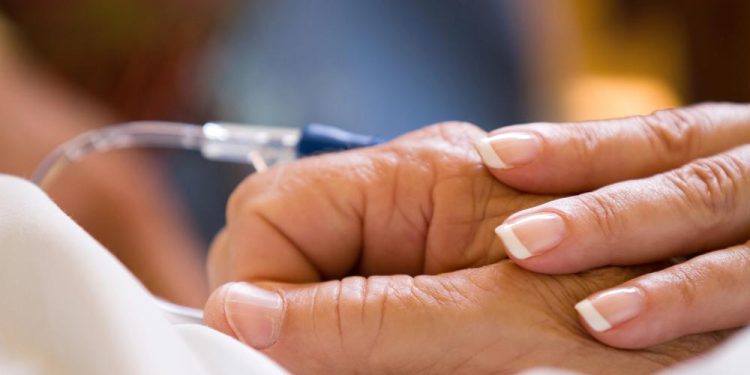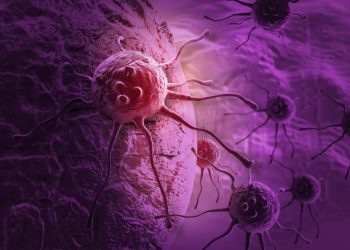Basal cell carcinomas grow slowly and rarely spread to other parts of the body. They do however tend to recur in untreated patients.
A surgical procedure called excision is used for high-risk BCCs with well-defined margins. The surgeon removes the tumor and a little bit of tissue around it to ensure that all cancer cells are removed.
Excision
Basal cell carcinoma is the most common type of skin cancer. It usually occurs on areas of the skin that have been exposed to sunlight. It may look like a raised bump or it may be flat and firm. The most common type looks pearly and smooth. Other types can look scaly or reddish or waxy. If a basal cell carcinoma is not treated, it can grow into deeper tissue and spread to other parts of the body.
The best treatment is surgical removal, or excision. During this procedure, your doctor removes the tumor along with a small margin of healthy tissue. The tissue is sent to a lab to be checked for cancer cells. This is the most common treatment for a basal cell carcinoma.
If the area where the basal cell carcinoma was is too large for surgery, reconstructive surgery may be needed to close the wound. This could include techniques such as skin grafts and flaps.
Another option is radiation therapy. This is a treatment that uses high-energy beams, such as X-rays or protons, to kill cancer cells. Your doctor can use this as a primary treatment for a basal cell carcinoma or as an additional treatment after other treatments.
Your doctor may also use a topical chemotherapy treatment on your skin. These medications are put on the cancer or a small amount of healthy skin. They work by blocking signals that are passed from one molecule inside a cell to another. These drugs may kill the cancer cells or stop them from growing. Two such drugs that have been approved for this use are vismodegib (Erivedge) and sonidegib (Odomzo).
Another drug, called cemplimab (sem-ply-mab), is being studied in clinical trials. It works with your immune system to find and destroy cancer cells. It is given by infusion at a hospital or cancer treatment center. The medication is taken every three weeks. Your doctor may recommend this option if you are not able to have surgery or if your basal cell carcinoma has spread to other areas of the body.
Mohs surgery
Mohs surgery is an effective method of removing basal cell carcinoma and other types of skin cancer in the most precise way possible, minimizing the loss of healthy tissue. It is typically performed in a doctor’s office with a lab nearby so that the surgeon can quickly and easily check the removed tissue for the presence of cancer cells after each layer is cut. Because of this, the procedure often lasts several hours and may require more than one round of treatment before the cancer is completely removed.
Before the surgery begins, your doctor will clean the area and mark it with a pen for reference. If the area is on your face, the doctor will position you for best access and drape the area in a surgical gown or sheet. Then, he or she will inject you with local anesthesia to numb the area.
The doctor will use a scalpel to remove the visible tumor and a thin layer of surrounding skin. After the tissue is removed, a bandage will be placed over the wound. Then you will be asked to wait in the doctor’s office or waiting room while the surgeon examines the removed tissue under a microscope for the presence of cancer cells. If the surgeon sees cancer cells at any of the margins, he or she will remove another thin layer of tissue and repeat the process until the tumor is completely removed and no cancer cells remain.
Once the surgeon is sure that no more cancer is present, he or she will close the wound and apply a dressing. Your doctor will instruct you to avoid any activities that could irritate the wound. If the area where the cancer was located is very large, a reconstructive surgery (such as a skin graft or flap) may be necessary to ensure that the wound will heal properly.
Mohs surgery is also used to treat squamous cell carcinoma (SCC), particularly in areas of the body that are at high risk for recurrence or metastasis, such as the ear and mucous membranes. Local recurrence rates of SCC treated with Mohs are reported to be as low as 3% compared to up to 13% for other surgical or non-surgical treatments.
Topical chemotherapy
While most people associate chemotherapy with treatments they get by IV or in pill form, topical medications can also be used to destroy cancerous cells. In the case of topical chemotherapy, anti-cancer creams or ointments are applied directly to damaged skin tissue to kill cancerous cells over an extended period of time. This type of treatment is a good option for superficial basal cell carcinoma or precancerous lesions that have not spread to other body parts.
Mercy Health doctors can prescribe medications such as fluorouracil or imiquimod to be applied to the affected area of the skin several times a day over two or more weeks. These topical drugs work to destroy cancerous and precancerous cells by triggering the immune system to attack and eliminate them. These drugs do not affect healthy tissue, but they can cause some unpleasant side effects including itching, redness or blisters at the site of the medication.
Unlike surgical removal, these treatment options do not leave any scars. However, they are not a solution for invasive basal cell carcinoma or other types of aggressive skin cancers. In addition, these medications do not treat the cancerous tissue beneath the surface of the skin and cannot prevent them from reoccurring.
If your doctor recommends this treatment for you, it is important to follow the instructions carefully. The location of the affected area of the skin and your immune system health will impact how well this option works for you. For example, if the affected area of your skin is on or near your eye, you will not be a candidate for this treatment.
The FDA recently approved the hedgehog pathway inhibitor cemiplimab for treatment of advanced basal cell carcinoma. This treatment is given by injection in the vein (intravenous immunotherapy) or directly into a tumor, and it may be more effective than other treatments, such as radiation or surgery. In February 2021, the FDA granted accelerated approval for the intravenous drug tasero for treatment of advanced basal cell carcinoma that has not responded to other therapies. This medication is currently being evaluated for other uses, including treating advanced melanoma and certain other forms of cancer.
Reconstructive surgery
Basal cell carcinoma is one of three major types of skin cancer and is most commonly found in sun exposed areas. When it is not treated properly, it can recur, which is why patients should always monitor their body for new growths and bumps and seek treatment immediately if they see any signs of skin cancer returning.
Surgery is the most common treatment for non-melanoma skin cancers and is usually performed in a hospital, clinic, or surgery center. The type of surgery you receive depends on the size and location of the tumor, how high your risk is for skin cancer, and your overall health.
Some surgical methods for removing skin cancer include curettage, excision with margin examination, and Mohs micrographic surgery. Mohs is an advanced surgical technique that allows physicians to examine tumors at the microscopic level while removing only the cancerous cells and leaving the surrounding healthy tissue intact. This method has proven to be more effective than other treatments such as electrodessication and curettage, radiation therapy, and cryotherapy.
Surgical removal of basal cell carcinoma often results in wide defects that may require reconstructive surgery. Local flaps and skin grafts are common reconstruction techniques. They can be used to repair skin defects around vital or cosmetically sensitive structures and to cover large defects that cannot be repaired with primary closure.
The authors of this study analyzed 30 facial basal cell carcinoma defect sites after reconstruction with local flaps and skin grafts. They reported that nine patients had a single type of skin cancer occurring as multiple lesions, while three patients experienced different cancer types (basal cell carcinoma and squamous cell carcinoma) that occurred together. They found that local flaps and skin grafts could be successfully used to repair basal cell carcinoma excision defects on the face and neck.
Reconstructive surgery is a critical part of treating any disease and can help people feel confident in their appearance again. Many adults have difficulty adjusting to the changes in their bodies that occur during reconstructive surgery, and it is important for doctors to offer emotional support and counseling for this process. This is especially true for patients who are undergoing reconstruction on their faces and necks, where the procedure can affect how they look.









